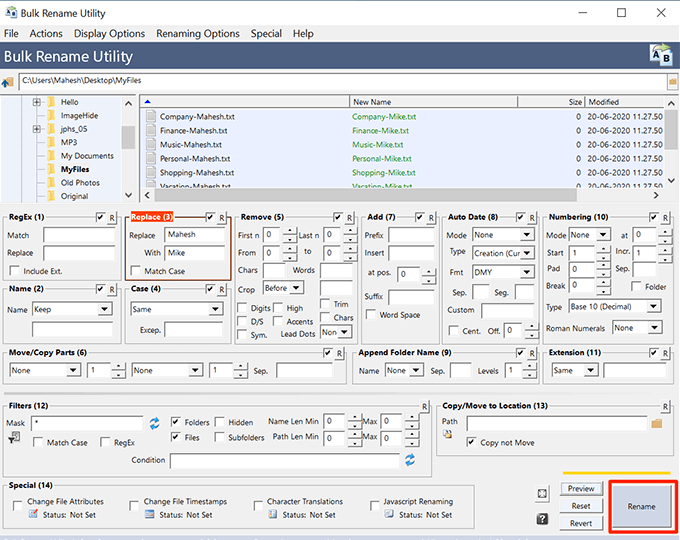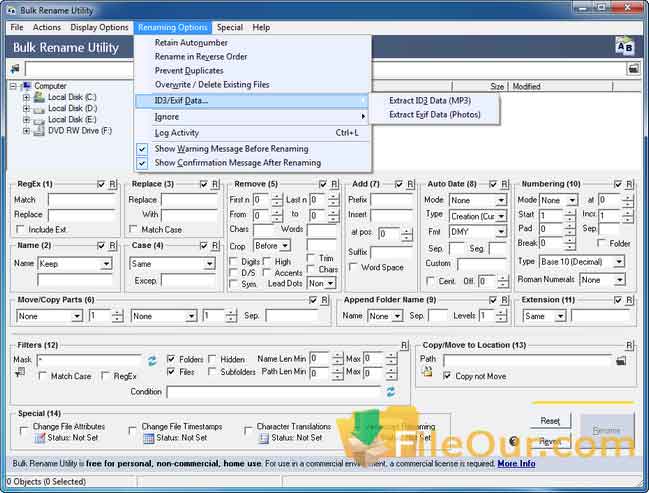


In the future version, I want bulk-mv to support any type of support filenames on Mac OS, Linux, and Windows. If necessary, find a tool that extracts the metadata from an AVI file in a way that facilitates its use in a scripting language. The first two are the easiest to make use of.

This can be especially useful if you have multiple. So far, bulk-mv only works on files/directories with POSIX Portable filenames/dirnames. Ignore the date column and decide which date I want to use: file creation date, file modified date or the 'date taken' date from the AVI metadata. In this post, we will see how to batch rename files and change file extension for all files in a folder quickly & easily in Windows 11/10/8/7. Operations are given the following precedence: Just note the order of operations to avoid making a mistake, like moving a file to a directory that you haven't created yet, for example. Bulk Rename Utility is an easy to use file rename program (a.k.a. It uses the following syntax: mv options source destination If you specify a directory as the destination when using the mv command, the source file moves to that directory. Of course, you can mix and match these operations all in one go. Rename Files with the mv Command The Linux mv (move) command is used to move files and directories from the terminal. You currently have to specify the full path to the directory you want to move the file/directory to starting from root path of the file tree (in this case, it's.


 0 kommentar(er)
0 kommentar(er)
